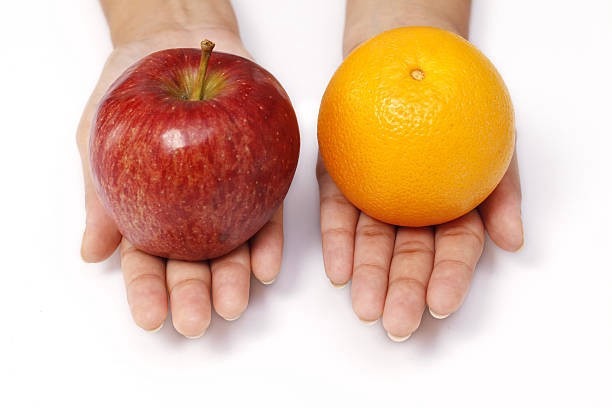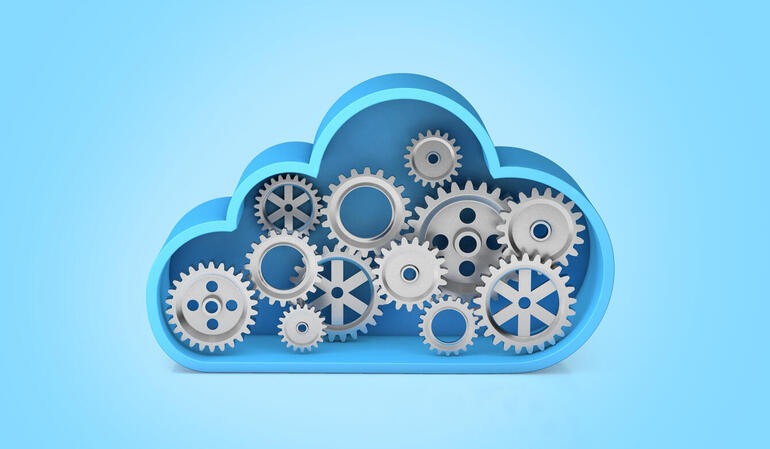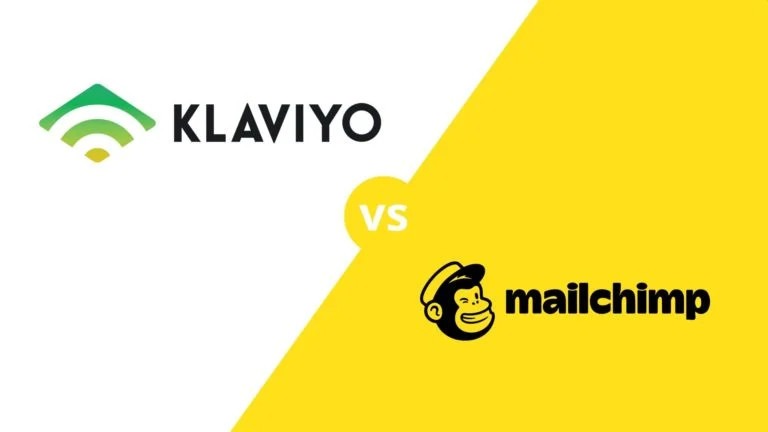The answer, as you may have expected, is…it depends.
The short and sweet answer is this:
If you are a small/medium winery with limited resources, little or no marketing expertise, and words like “segmentation” and “email automation” are a bit foreign or scary, Mailchimp might be a good option for you. If you’re a medium/large winery or a marketing professional servicing wineries, you have resources dedicated to marketing, and you want the most power and flexibility possible, Klaviyo might be a better option for you. Basically, Mailchimp is more “beginner-friendly”, somewhat rigid in how you can/should use it, and it’s harder to mess up, but Klaviyo has more options and you can bend it to your will to do lots of cool and interesting things…but if you don’t know what you’re doing, you may find yourself overwhelmed.
Now, let’s get into the nitty gritty.
Fundamental Differences

The biggest difference is in the rigidity of Mailchimp versus the flexibility of Klaviyo as well as the “object” based approach to e-commerce of Mailchimip versus the “event” based approach of Klaviyo.
Mailchimp
Mailchimp has a customer record and you can set custom fields on it, however doing so is a bit cumbersome and there is a limit to the number of fields you can use. It also has products, which you can not set custom fields on. You get what they give you, which is pretty limited (name, description, image, etc.). Finally, there are orders, which again, do not allow any customization. If you want to know if it was a “tasting room” order versus a “website” order, it can’t be done because that data can’t be stored in Mailchimp anywhere.
Speaking of orders, they’re a “thing” in Mailchimp. You can view a customer’s list of orders. You can modify that order in Commerce7 and your integration will update the order in Mailchimp. You can delete the order and it disappears from the customer forever in Mailchimp with no record of it having ever existed. There is also strict validation of orders in that they must only contain products that you have told Mailchimp about, otherwise they’re rejected. So if you load in some legacy orders containing SKUs that you no longer have in your system, Mailchimp will reject those as invalid and you may not have a complete picture of your customer. For most wineries, day-to-day operations, this isn’t an issue because the products in the orders being placed do exist.
Klaviyo
Klaviyo has a customer record that you can add custom fields to as well. It’s very easy to do and there is no limit to the number of fields. As a result, the Digimatic integration is able to pass club data, tags, meta data, custom fields, and the kitchen sink over to give you as much data as possible to work with. You can also have custom fields on events, which we’ll talk about in a second. But basically you can have an “Ordered Product” event and then pass in every single thing you could ever possibly know about that product (varietal, appellation, vintage, department, meta data, custom fields, etc.)
Speaking of orders…they’re not a “thing” in Klaviyo. You can’t pull a list of orders for a customer. You can’t edit orders. Instead, you have “events”. You can see there was a “Placed Order” event that happened, when it happened, and all of the details about that order at the time it was placed. If you later refund the order, the original “Placed Order” event is unchanged. However a “Refunded Order” event will be logged, so the “lifetime value” of the customer is adjusted properly. One other interesting thing is there is no validation on events, so you can put SKUs in an order that don’t exist in your system anymore. It doesn’t matter and you probably don’t care; you just care that their lifetime value is accurate and you can even segment on people who bought those old SKUs that don’t exist anymore.
What’s more, you can have any event you want and pass any data with it. The Digimatic integration for example added the “Placed Reservation” event, even though there’s no mention of any support for that type of event within Klaviyo. So, for example, you can go in and add a “Viewed Club Information” event with custom properties about which club they viewed and pass that in to your Klaviyo account with a little snippet of code on your website. Then later send an email to people who viewed the club information, but didn’t sign up.
Segmentation

Segmentation is the ability to carve out chunks of your customers that all have something in common where that “something” is an opportunity to provide some customization or targeted communication. For example, a segment called “VIP Customers” that is all customers who have spent more than $1,000, purchased in the last 6 months, and whose average order value is greater than $300. You might want to communicate differently to this “segment” than to someone who has never purchased before or a brand new customer for example.
Mailchimp
Mailchimp does provide decent segmentation abilities. The “VIP Customers” for example would be possible to do in Mailchimp. However, it’s limited by the types of data you’re able to store about a customer and their behavior. For example, you can segment on people who have bought a specific SKU, but you could not segment on people who bought a specific varietal. If you want to target your Pinot drinkers, you’re out of luck. If you have a (fairly pricy) premium account, you get access to a few more options, like a “type” of product. The Digimatic integration passes in the wine type here for wines, so you could segment “Red” or “Sparkling” drinkers for example.
Klaviyo
Klaviyo shines here. Since you can store ANY data you want on customers and pass in any “event” like “Placed Order” or “Made a Reservation” and each event can have ANY data you want, your options for segmenting are nearly unlimited. Combined with Commerce7’s ability to store “custom fields”, you can get really creative here. Have a field to store your customer’s dog’s name? Segment on dog owners within 50 miles of the winery to tell them about the pet-friendly options at your next event. Have a third party tool tagging club members as flight risks? Those tags will sync over and you can segment on that. Want to send a personalized thank you to people who made a reservation with “Courtney” or who sat in the patio area? Sure thing. Some of these are a bit silly, but you can see how almost anything you can think of is probably doable.
Automations

Automations let you set up some rules to automatically send emails based on certain events. More advanced automations might be several steps with branches along the way and can get quite sophisticated. One common automation is the “abandoned cart” flow. If someone adds something to their cart, wait an hour, if they haven’t placed an order, send the “Hey, you forgot something” email.
Mailchimp
Mailchimp has fairly robust options for automations. One thing it’s really good at is getting some of the foundational automations set up quickly and easily. Things like abandoned cart and welcome flow are as simple as clicking a button and answering some questions, select a template, and you’re off and running. You can also use the automation builder to make your own custom automations. Some of the more advanced features require the premium account.
Klaviyo
Klaviyo is a bit more robust with their automation capabilities. You can do more with it, but it’s a bit more complex to use. They do have some basic templates like abandoned carts, welcome, and win backs, but customizing them requires a bit more know-how of the inner workings. Keeping with the theme, Mailchimp is better at getting you up and running quickly and easily, but if you want to squeeze a bit more performance out of your automations, Klaviyo will let you do that.
Other Stuff
Klaviyo tends to cost a bit more than Mailchimp, depending on your needs. Mailchimp has a free plan for up to 2,000 contacts, which a lot of smaller wineries find they can use just fine. Klaviyo is free up to 250 contacts, which is not really enough for any business, so you’ll end up having to get a paid plan. Klaviyo’s reporting is better; more data, better breakdowns, and more focused on helping you to optimize your campaigns. Mailchimp has some basic revenue reporting, which is good enough for a lot of wineries to know roughly how their campaign’s performed.
Conclusion
I hesitate to say that one platform is “better” than the other. It really does depend. Mailchimp is great at getting you up to speed and functional with all of the basics quickly and easily. This is great for wineries that don’t have the expertise or resources to pour into marketing. Klaviyo is very much “you get what you put in”. While it has far more flexibility and power, you do need the resources and expertise to put in the work harnessing that power. Mailchimp is your daily driver; gets you from point A to point B and it’s better than nothing (walking). But if you are a professional driver and want to hit the track, you’ll probably feel more comfortable with Klaviyo. If you’re currently using Mailchimp and thinking about switching, I would say it only makes sense if you have a substantial enough customer base. Klaviyo will let you squeeze a modest percentage more revenue from your email list, but a modest percent of a small number may not be worth it. If you have a large list, the difference may be significant enough to consider switching.
